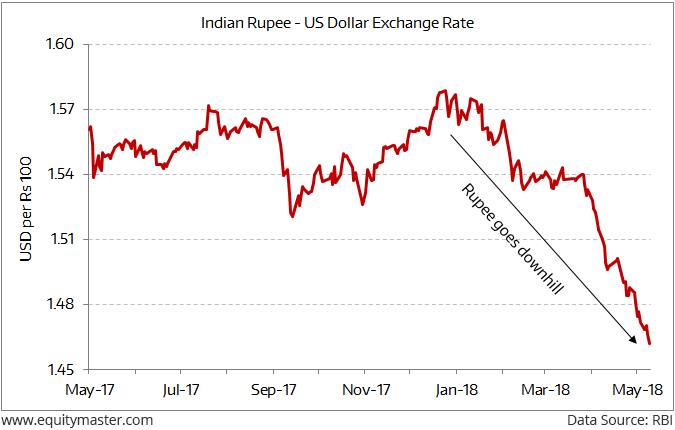Indian share markets continued to trade in the red during the closing hours of the trading session and ended the day on a negative note. Losses were largely seen in the metal sector and healthcare sector.
At the closing bell, the BSE Sensex stood lower by 155 points (down 0.4%) and the NSE Nifty closed lower by 41 points (down 0.4%). Both – the BSE Mid Cap index and the BSE Small Cap index – ended their day down by 0.8%.
Asian stock markets finished on a negative note as of the most recent closing prices. The Hang Seng stood down by 0.85% and the Nikkei was trading down by 1.35%.
European markets were also trading on a negative note. The FTSE 100 was down by 0.72%. The DAX, was down by 1.55% while the CAC 40 was down by 1.1%.
The rupee was trading at 68.86 to the US$ at the time of writing.
In the news from currency markets, as per a leading financial daily, the Reserve Bank of India (RBI) likely intervened in the foreign exchange market to support the Indian rupee today.
The Indian rupee fell to a low of 69.03 against the US dollar today – it’s lowest since July 24. The fall in the rupee was seen after most emerging market currencies fell amid global tensions.
Note that the rupee has been witnessing selling pressure against the US dollar since the start of this calendar year. This is evident from the chart below, which shows the quantum of US dollars a 100-rupee note can buy and how this rate has been declining over the past few months:
Indian Rupee in a Steep Decline

What does the fall in rupee mean for the Indian economy?
A depreciation in rupee means importers buying goods and services at a higher rate that earlier. This doesn’t bode well for a developing economy that relies heavily on imports.
Also, India imports most of its oil requirements. So, a fall in rupee leads to a consequent rise in the import bill. The depreciation of the rupee will also add to crude oil’s rising cost.













Leave A Comment